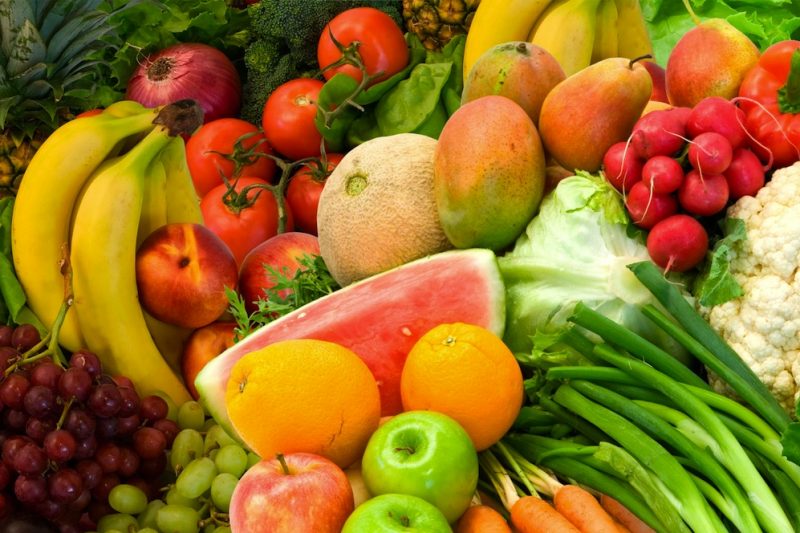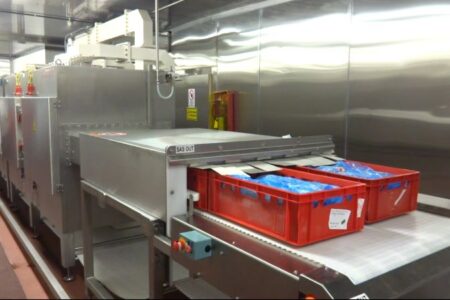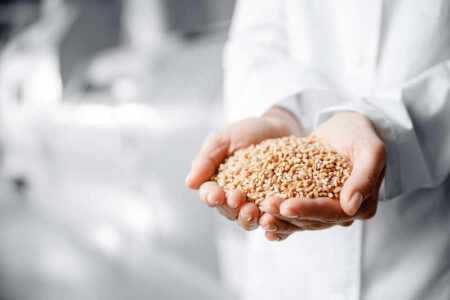Peeling off the layers

The latest developments in the fruit and vegetable industry – from processing, handling, new products and logistics.
The fruit and vegetable sectors are vibrant sectors of the food industry. With increased focus on consumers’ fruit and vegetable intake, there have been recent new developments in terms of specialised handling, processing, new products and logistics.
On the processing side, Tong Peal, the UK designer and manufacturer of handling equipment for the vegetable industry, has announced an updated model of its market-leading barrel washer. Robust and engineered to provide smooth washing operation and crop movement, the enhanced system includes a number of new features alongside the latest crop processing technologies.
The Blue Inverter technology driven motors for improved energy efficiency and heavy-duty side guards offers easy-access cleaning facilities for simple maintenance.
Manufactured in barrel lengths ranging from 1.2m – 5m, the Tong Peal Barrel Washer can be specified as a stand-alone unit or integrated into a new or existing handling line. The washer is available in 12 standard specifications, or can be fully customised to suit exact washing requirements, with throughput capabilities of up to 40tph.
Processing of quick frozen vegetables and fruit has also seen new developments.
Tomra Sorting Food has launched its Blizzard free-fall sorter for the individually quick frozen vegetable and fruit processing market.
An alternative to the company’s existing Helius and Nimbus high end, free-fall sorters, Tomra says the Blizzard provides continuous inspection and ensures food safety and customer satisfaction by removing unwanted discolorations, foreign material and misshapen produce, with maximum yield.
The Blizzard delivers stable detection, utilizing pulsed light-emitting diodes (LEDs) with multiple infrared (IR) wavelengths, combined with specially-designed full red, green, blue (RGB) cameras.
It is a small footprint sorter that can comfortably replace older generation systems and easily fits in processing lines. Specifically designed to handle output of individually quick frozen (IQF) tunnels optimally, it can be installed just after these or prior to packing. It can handle both mono and mixed color produce, meaning it can work with the complete color palette, including ready-to-eat meals, for example.
Bjorn Thumas, market unit director, says, “The Blizzard involves pulsed LED technology, already implemented in our large produce sorters, adapted to the specific needs of the IQF industry. The high-power, colour modulated LED technology is very effective for various reasons. It has a lifetime of more than 50,000 hours, so required virtually no replacement, and offered very stable output, with its calibration frequency kept to a minimum.”
Handling
Handling is an important topic for the delicate fruit and vegetable sectors. Previously deemed too harsh to use on delicate produce, pick and place robots are becoming increasingly commonplace in the handling of fruit and vegetables. This is partly evidenced by the sales figures unveiled by the British Automation and Robotics Association (BARA) in January, which reveals a 60% uplift in food sector automation adoption compared to 2000*.
While the arm of the robot tends to harvest the most attention, it’s actually the end-effector – the hand – that determines the precise operation that the unit performs. Paul Wilkinson, business development manager at automation integrator company Pacepacker Services, explains, “For fruit and vegetable packers, ensuring you have the right end tool for the product is a key consideration. While speed is naturally important, the end-effectors must be able to adapt to a variety of shapes and apply minimal pressure to prevent bruising and high waste volumes.”
End tooling for pick and place tends to fall into one of four categories: vacuum systems, magnets, clamps and clamshell style. For fresh produce, clamshell tends to be the gentler choice for packing easily damaged and irregularly shaped products. A pneumatically operated mechanical system restrains the opening and closing of the gripper to ensure that excessive force is not applied to the product, Grippers can also have cushioned linings to further reduce damage on delicate items and can be customised to flex to specific product shapes. Onions and peppers are just two product types to benefit from a Pacepacker clamshell installation.
When it comes to picking up delicate produce piece-by-piece, such as individual peaches, avocados or eggs, Pacepacker, with its robot manufacturing partner Festo, is on the case. “The latest innovation has ‘adaptive fingers’, with ‘prehensile’ abilities that enable them to change their shape to the item being picked up,” highlights Paul. “So, while cost and performance are critical factors when selecting a pick and place robot, the quality of that performance will stand or fall on the choice of end-effector.”
Liquid vegetables
In terms of new products, there may be potential in vegetable juices. Norman Gierow, head of global market segment management at SIG Combibloc, says, “We’re seeing that the number of vegetable juices offered in our carton packs is increasing steadily. And today, manufacturers’ product portfolios include more than just popular classics such as tomato juice. Particularly in the vegetable juices segment, food manufacturers are flexing their creative muscles – and the market for it is there”.
In Poland, for instance, Maspex has brought out the ‘Vega’ product range, under the established ‘Tymbark’ brand name. Vega products are vegetable juices, offered in combifitPremium 500 ml with combiSwift screw cap. The juices are available in three different varieties: Sunny Mexico, Provençal Fields and Mediterranean Garden. Norman Gierow, adds, “A single 250 ml glass of the vegetable juices is equivalent to two of the recommended five portions of fruit and vegetables an adult should eat every day. One of the Vega juices, Mediterranean Garden, has been awarded Product of the Year 2012 in the Beverages category by ‘Pani Domu’ (‘Lady of the House’), a popular women’s magazine”.
Sunraysia, founded in Australia in 1985 by Dan Presser, is another company that is opting for naturally healthy vegetable juices – manufactured ready to drink and conveniently packaged in carton packs. The juices are now also selling well in other countries, such as the UK, where the Gerber Juice Company is filling a premium line of pure not-from-concentrate juices with 100 per cent vegetable content in the varieties Tomato Juice, Beetroot & Apple Juice and Carrot Juice in the carton pack combifitMidi 750 ml with combiSwift screw cap. The Sunraysia juices are among the premium brands in the United Kingdom. Each variety offers the added benefit of antioxidants and vitamins.
Fruit logistics
In the final logistical step towards consumers, Gist has been awarded a two year contract with In2food to manage the supply chain of its growing range of fresh fruit pots from the airport to retail stores in the UK and Europe. South African based In2food supplies prepared fruit mixes including mixes of mango, melon, passion fruit, pineapple, kiwi, apple, citrus, pineapple and grapes. Gist is managing more than 25 different lines of fruit pots from their arrival in the UK from South Africa by air.
The team has created a time-efficient supply chain that delivers the fresh fruit products in the minimum of time, maximising the products’ shelf-life. The fruit leaves South Africa to arrive ready for purchasing on retail shelves in the UK, Netherlands and France within 36 hours.
New Leatherhead poll shows consumers believe they are eating enough fruit and veg
A new Leatherhead Food Research poll delves into fruit and vegetable consumption and shows the ‘seven a day’ message may be difficult for consumers to swallow. Leatherhead reports that food and drink companies may offer the solution.
Recently, the University College London (UCL) published findings from a UK-based study looking at the impact of a range of health and lifestyle factors on wellbeing – one of the factors was fruit and vegetable consumption. The study, based on more than 65,000 randomly selected adults who were participating in the Health Survey for England, reports that the higher a person’s intake of fruit and vegetables, the lower their risk of death from diseases such as cardiovascular disease and cancer.
A recent poll with 1,185 UK consumers by Leatherhead Food Research has shown how difficult it is for consumers to achieve the Department for Health’s recommended five fruit and vegetables a day, let alone the seven quoted in UCL’s study. Leatherhead’s poll shows that on average UK consumers report they eat 4.3 portions of fruit and vegetables a day. When asked whether they would be able to eat seven a day, nearly half admitted it would be difficult. A fifth of consumers said the price tag for fruit and vegetables prevented them from eating more and over one in ten were put off by the amount of planning and preparation required to fit fresh fruit and vegetables into their diet. 50%, however, said nothing prevented them from eating more fruit and vegetables, suggesting they believe their fruit and vegetable intake is adequate.
Emma Gubisch, Strategic Insight Manager at Leatherhead, said “many consumers believe they are actually eating enough fruit and vegetables and can’t imagine how they would incorporate more into their diet. The ‘five a day’ message has been picked up by consumers as a benchmark – if they believe they are managing to eat roughly five portions a day, then they think they are doing a good job. ‘Seven a day’ would require a shift in consumer mind-set and behaviour.”
Leatherhead Food Research believes food and drink companies are in a strong position to help consumers to incorporate more fruit and vegetables into their diet.
With the focus moving towards more regulation, manufacturers will need to be armed with as much information about the nutritional and sensory profile of their product as possible if they want to make a ‘five a day’ or even ‘seven a day’ claim. Georgia Taylor, Leatherhead’s Marketing & Claims Advisor, said those responsible for claims on-pack and in advertising and marketing material should ensure that the product meets the criteria for being a portion of fresh fruit of vegetables in order to claim that a product counts as one of a person’s ‘five a day’.



